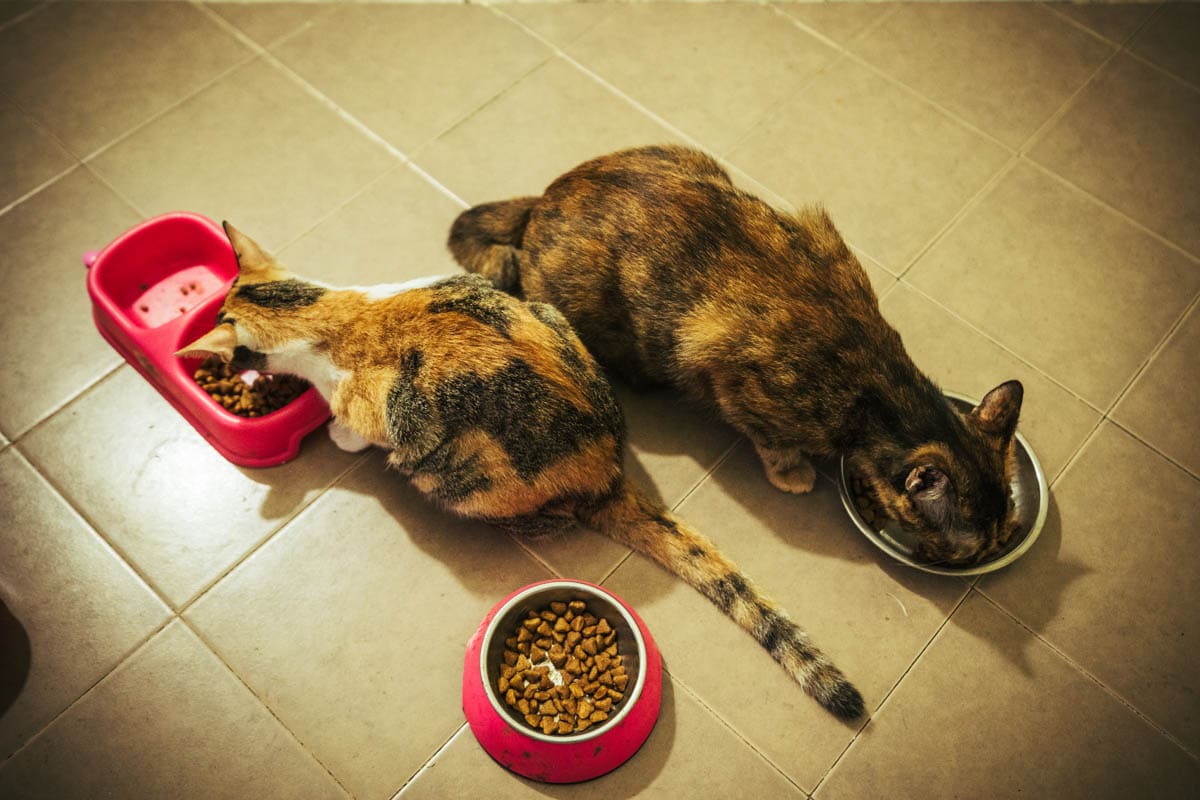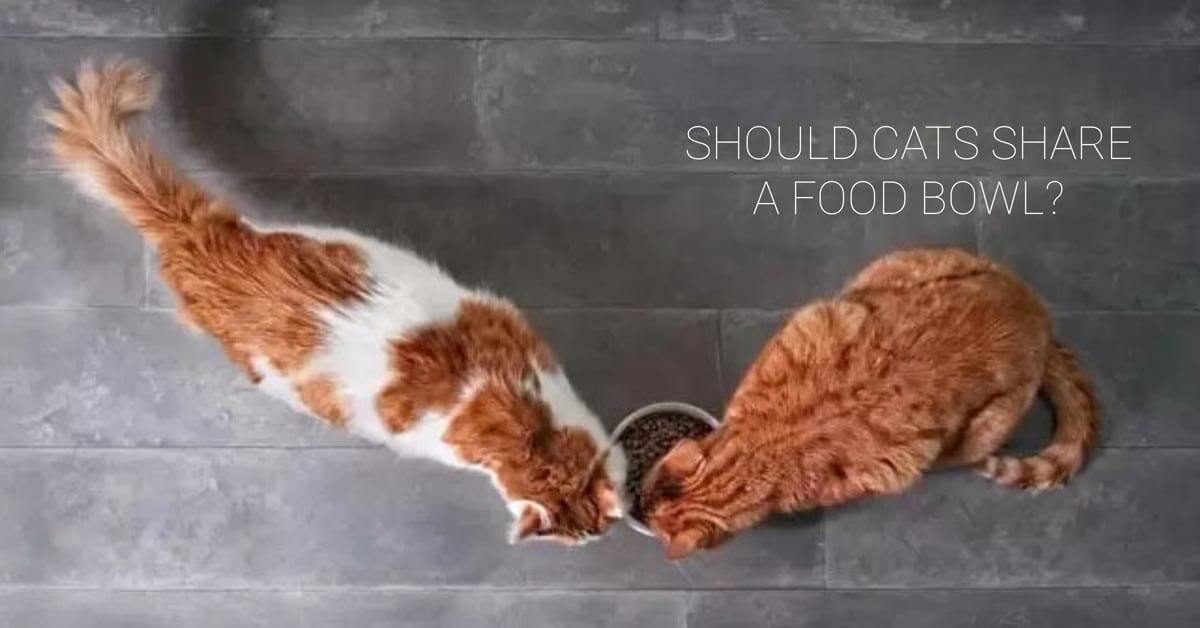It is a common practice among multi-cat households to have several cats eat out of the same bowl. It’s not something I had thought about until I saw a recent article on feeding dogs from separate bowls. This made me asks if it was a better thing for cats, too.
Obviously, one bowl is easy. It saves space, less washing up, easier all around, but what about the cats? I thought my own cats were happy to share a bowl until I started thinking about it. They are fed a combination of raw, chicken necks and dry biscuits. When I feed them raw, one cat in particular grabs it from the bowl and then scurries away with his chunk of food.
Assertive vs non-assertive cats
There’s usually a hierarchy among multi-cat households with one cat being more dominant. This can cause problems at mealtimes if the dominant one races in and eats a larger share of the meal than other less dominant cats. Also, you may find that one cat has a bigger appetite than another, and he can end up getting more than his fair share of the food.
Special diets
As a cat ages, his nutritional needs may change, particularly if he develops a medical condition such as chronic kidney disease. Or an obese cat who is put on a low-calorie diet for weight loss.
The solution

Be mindful that most cats aren’t social eaters like we are. Think about how a cat hunts and eats in the wild. Small cats hunt and eat on their own. We have them in an artificial environment where they are forced to share bowls and litter trays. Many will tolerate this, but not all cats will. It is important to read the cues your cat gives you.
The best way to feed multiple cats is to create a feeding station and give each one his own food bowl, especially for his wet food (tinned or raw). Many pet owners have a shared bowl for dry food, which cats can access at any time. As cats tend to graze on dry, there is less chance of them all trying to eat from the bowl at the same time. Some cats will stick with their own food bowl, but it’s not uncommon for cats to swap between bowls. In this case, you may try moving the bowls further apart or feeding in separate rooms, particularly if one cat is on a prescribed diet.
Do you have a small kitten and an adult cat? Most adults can eat considerably faster than a kitten, which could result in the kitten not getting enough food. Even some adult cats will eat slower than others. There are no hard and fast rules when it comes to feeding cats. If it is possible, give each cat his own food bowl, but it’s not going to be the end of the world if they eat together. However, if you do have one cat who dominates the food bowl, it will be necessary to step in and make sure other cats receive their fair share of food. Any uneaten wet food should be removed after 20-30 minutes.
What about water bowls?
Water bowls aren’t as big an issue as food bowls as most pet owners feed their cats at set times, and all cats jump in to eat. Whereas cats will drink when they are thirsty, so they’re usually not all drinking from the same bowl at the same time.
But…
Sometimes it is necessary to monitor a cat’s water intake, for example, if you think one is drinking excessively, which can be a sign of kidney disease or diabetes. To do this, isolate the cat and give him his own water (and food) bowl. Add a measured amount of water into the bowl, the next morning, empty out the water from the bowl into a measuring jug to see how much water has been drunk.
Deciding where to locate your cat’s food bowls
The first rule is that cats don’t like to eat near their litter tray. Place bowls several feet away from the litter tray. Consider the age and health of your cat. We can’t expect a senior cat to walk up two flights of stairs to eat. We must meet their needs and ensure food and water bowls are within easy reach. The same goes for litter trays and beds.
Ideally, feed cats as far apart as you can, even in separate rooms. This can greatly help cats feel more secure when they are eating. If the time comes that they need to be fed different kinds of food to suit their medical or dietary needs, it will make it easier to control.

